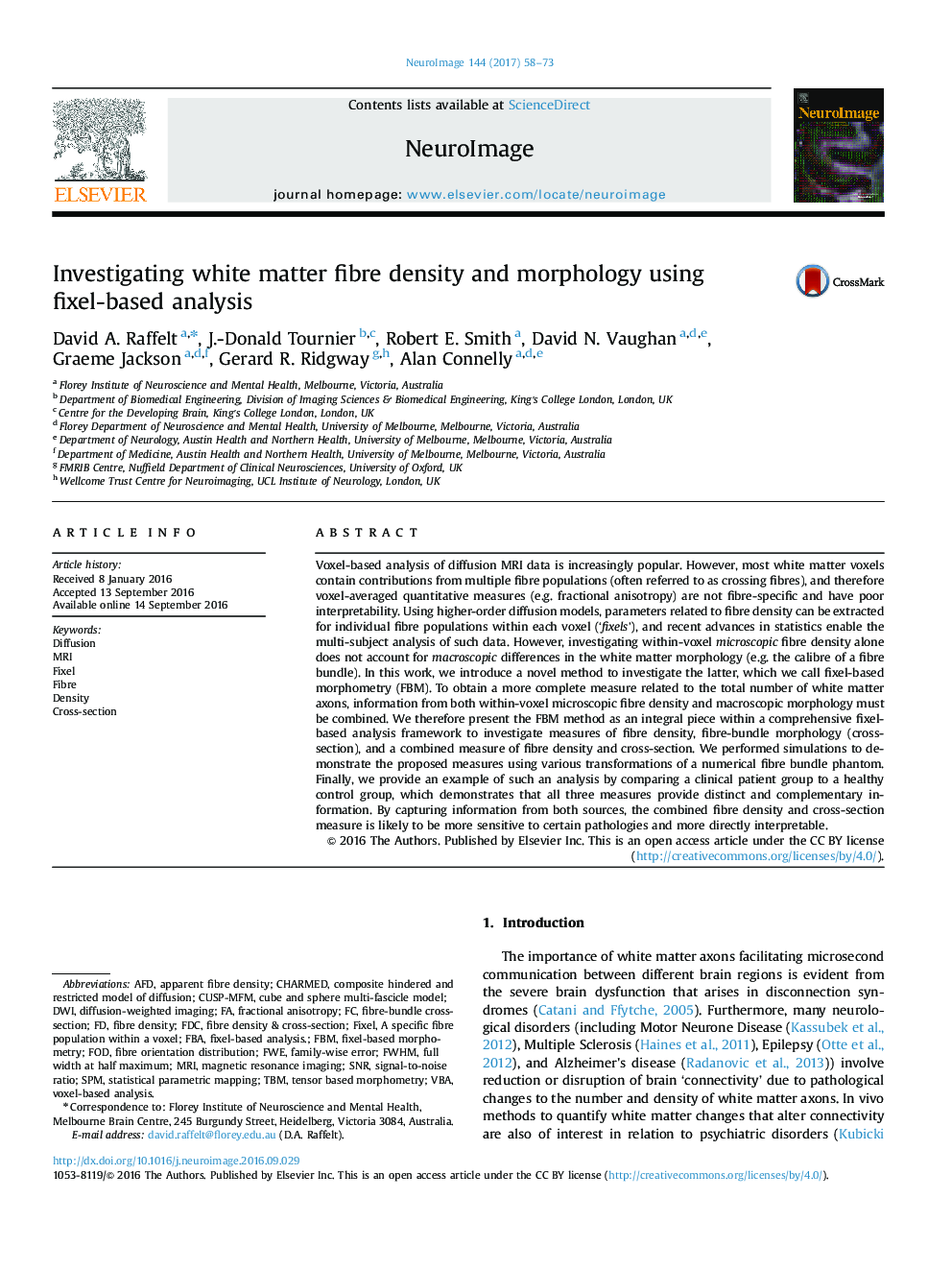| Article ID | Journal | Published Year | Pages | File Type |
|---|---|---|---|---|
| 5631661 | NeuroImage | 2017 | 16 Pages |
â¢A fixel is defined as a specific fibre population within a voxel.â¢We describe a comprehensive approach to fixel-based analysis (FBA) of white matter.â¢A novel method to investigate fibre bundle morphology (cross-section) is presented.â¢We compare fibre density, cross-section and a combined measure in a clinical cohort.â¢The three different analyses give unique yet complementary information.
Voxel-based analysis of diffusion MRI data is increasingly popular. However, most white matter voxels contain contributions from multiple fibre populations (often referred to as crossing fibres), and therefore voxel-averaged quantitative measures (e.g. fractional anisotropy) are not fibre-specific and have poor interpretability. Using higher-order diffusion models, parameters related to fibre density can be extracted for individual fibre populations within each voxel ('fixels'), and recent advances in statistics enable the multi-subject analysis of such data. However, investigating within-voxel microscopic fibre density alone does not account for macroscopic differences in the white matter morphology (e.g. the calibre of a fibre bundle). In this work, we introduce a novel method to investigate the latter, which we call fixel-based morphometry (FBM). To obtain a more complete measure related to the total number of white matter axons, information from both within-voxel microscopic fibre density and macroscopic morphology must be combined. We therefore present the FBM method as an integral piece within a comprehensive fixel-based analysis framework to investigate measures of fibre density, fibre-bundle morphology (cross-section), and a combined measure of fibre density and cross-section. We performed simulations to demonstrate the proposed measures using various transformations of a numerical fibre bundle phantom. Finally, we provide an example of such an analysis by comparing a clinical patient group to a healthy control group, which demonstrates that all three measures provide distinct and complementary information. By capturing information from both sources, the combined fibre density and cross-section measure is likely to be more sensitive to certain pathologies and more directly interpretable.
Graphical abstractDownload high-res image (265KB)Download full-size image
